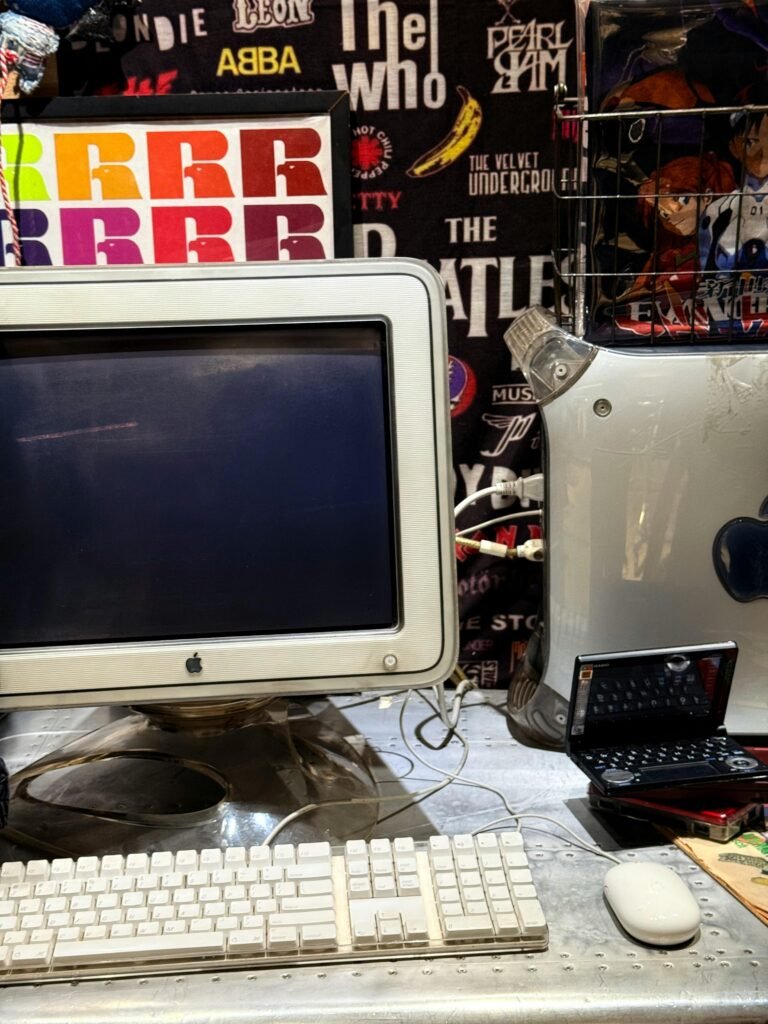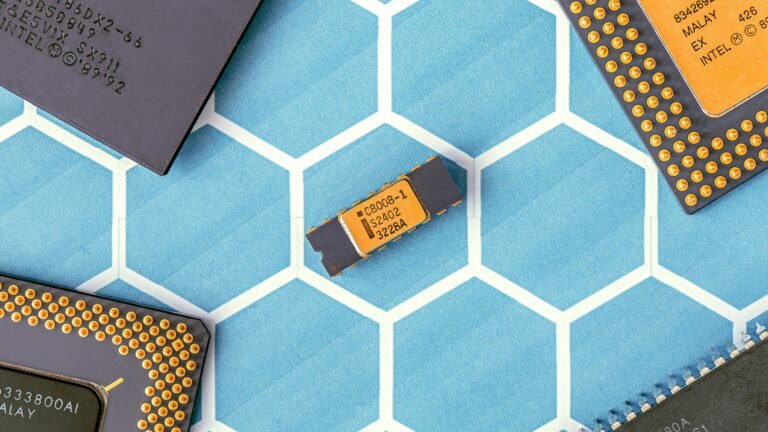
Apple’s M5-Powered Vision Pro and MacBook Pro: Revolutionary Performance Arrives as FCC Leak Exposes Next-Generation Lineup
The Federal Communications Commission has inadvertently unveiled Apple’s most significant hardware refresh in years, accidentally publishing confidential documents that confirm new Vision Pro, MacBook Pro, and iPad Pro models powered by the company’s next-generation M5 chip. This regulatory mishap, occurring just days after a similar iPhone 16e schematic leak, provides unprecedented insight into Apple’s upcoming product strategy and marks a pivotal moment in the evolution of spatial computing and professional laptops.
Vision Pro Gets Transformative M5 Upgrade
Performance Revolution in Spatial Computing
The FCC documents reference an Apple-designed “Head Mounted Device” with model number A3416, confirmed through internal imagery to be an updated Vision Pro headset. This marks the most significant upgrade to Apple’s spatial computer since its February 2024 launch, with the M5 chip representing a generational leap from the current M2 processor.
The M5 chip brings enhanced artificial intelligence capabilities specifically designed for spatial computing demands. Unlike the M2, which struggles to simultaneously handle visionOS processes and Apple Intelligence features, the M5’s enhanced Neural Engine can manage both seamlessly. This upgrade enables previously unavailable AI-driven functionalities including advanced eye-tracking, gesture recognition, and immersive content creation.
Technical Specifications and Features
The M5-powered Vision Pro is expected to feature a 10-core CPU configuration with six high-performance cores and four efficiency cores, along with a 12-core GPU representing a significant upgrade from the current generation. The enhanced architecture promises substantial improvements in thermal management and power efficiency, addressing two key pain points of the original model.
Most importantly, the chip’s upgraded Neural Engine delivers enhanced AI processing capabilities with improved TOPS (Trillions of Operations Per Second) performance. The M4 Neural Engine already achieved 38 TOPS, a massive increase over the M3’s 18 TOPS, and the M5 is expected to push these numbers even higher.
Design Continuity with Internal Improvements
While the external design remains largely unchanged to maintain compatibility with existing accessories, the internal improvements are substantial. The headset is expected to feature an improved strap designed to reduce neck strain and head pain, addressing one of the most common user complaints. The $3,499 price point is expected to remain consistent with the current model.
The Vision Pro 2 will continue to support the same display technology—dual 4K micro-OLED displays with 23 million combined pixels—but with improved processing capabilities for smoother performance and reduced latency.
M5 MacBook Pro: Professional Computing Redefined
Unprecedented Performance Gains
The M5 MacBook Pro represents a significant leap in professional computing performance. According to leaked benchmarks and performance predictions, the M5 chip delivers approximately 30-40% overall performance improvement compared to its M4 predecessor. CPU performance gains are estimated at 15%, while GPU enhancements could be even more pronounced, making the device ideal for resource-intensive tasks such as video editing, 3D rendering, and complex simulations.
Early benchmark leaks suggest the M5 achieves single-core scores around 4,133 and multi-core scores of 15,437 in Geekbench 6 testing. These numbers represent a 12% improvement in single-core performance and 15% boost in multi-core performance compared to the M4. Most impressively, GPU performance shows a 35% increase, with Metal benchmark scores reaching 74,568 compared to the M4’s 55,702.
Enhanced AI and Graphics Capabilities
The M5 chip introduces substantial improvements in artificial intelligence processing through its enhanced Neural Engine. Built on TSMC’s advanced third-generation 3nm node (N3P), the chip offers 5% better performance and 5-10% improved power efficiency compared to previous generations.
The chip architecture incorporates new System-on-Integrated-Chips-molding-Horizontal (SoIC-mH) technology, which allows for better chip stacking and improved heat conductivity. This technological advancement enables higher performance while maintaining efficient thermal management, crucial for sustained professional workloads
.
Storage and Configuration Upgrades
Apple is reportedly doubling the baseline storage of the M5 MacBook Pro from 512GB to 1TB. This significant upgrade addresses professional users’ growing storage needs for large files, applications, and media projects. RAM configurations are expected to start at 16GB and extend to 24GB and 32GB options, with some models featuring 12GB as seen in leaked iPad Pro units.
The FCC documents reference model number A3434 for the new MacBook Pro, indicating the device is nearing production readiness. The timing suggests a late 2025 or early 2026 launch window, aligning with Apple’s typical product refresh cycle.
Design Philosophy and Future-Proofing
While maintaining the familiar aluminum design language, the M5 MacBook Pro focuses on internal improvements rather than dramatic external changes. This approach ensures compatibility with existing accessories while delivering meaningful performance enhancements. However, reports suggest Apple is reserving major design updates, including OLED displays and thinner profiles, for the M6 generation expected in 2026-2027.
The new models are expected to support advanced connectivity features including Wi-Fi 7, Bluetooth 6, and potentially Thunderbolt 5 ports for improved bandwidth with external displays and storage devices.
iPad Pro M5: Mobile Computing Powerhouse
Russian YouTube Leak Reveals Performance
A comprehensive leak by Russian YouTuber Wylsacom, the same channel that previously leaked M4 MacBook Pro models, has provided detailed insight into the M5 iPad Pro’s capabilities. The leaked device shows a 13-inch iPad Pro with 256GB storage and 12GB RAM, compared to 8GB in comparable M4 models.
The benchmarking reveals impressive performance gains: single-core scores of 4,133 (up from 3,748 on M4) and multi-core scores of 15,437 (up from 13,324), representing 10% and 15% improvements respectively. GPU performance shows the most dramatic increase, jumping from 55,702 to 74,568 in Metal benchmarks.
Multiple Model Configurations
The FCC documents reveal multiple iPad Pro model numbers, including A3357 through A3362, representing new 11-inch and 13-inch iPad Pro variants in both Wi-Fi and cellular configurations. This comprehensive lineup suggests Apple is preparing a complete refresh of its professional tablet line.
Internal codenames for testing variants include J817, J818, J820, and J821, indicating Apple has been extensively testing multiple configurations. The devices are expected to support Wi-Fi 7 connectivity, bringing faster wireless speeds and lower latency.
FCC Leak Reveals Pattern of Regulatory Missteps
Confidentiality Breaches Continue
This latest leak marks the second major FCC disclosure involving Apple within days. Earlier in the week, the commission accidentally published 163-page iPhone 16e schematics despite Apple’s September 2024 confidentiality request. Apple’s letter explicitly warned that releasing such technical documents could provide competitors an “unfair advantage”.
The FCC’s metadata indicates both short-term and permanent confidentiality settings were incorrectly marked as “no,” triggering automatic publication contrary to Apple’s written requests. The pattern suggests systemic issues with the commission’s confidentiality handling procedures.
Technical Implications for Competition
While these documents hold limited value for average consumers, they provide significant benefits to hardware researchers, independent repair shops, and competing manufacturers. The schematics reveal board-level component routing, signal pathways between major chips, and test pad layouts information that simplifies fault tracing and board-level repairs.
Security researchers could potentially identify hardware attack surfaces previously unknown to the public, though Apple’s legal team is likely preparing comprehensive responses to protect its intellectual property.
Market Impact and Strategic Implications
Competitive Positioning
The M5 generation represents Apple’s most aggressive push into AI-optimized computing. With enhanced Neural Engine capabilities specifically designed for artificial intelligence workloads, these devices position Apple to compete directly with NVIDIA’s dominance in AI processing. The unified memory architecture of Apple Silicon provides unique advantages for AI inferencing that traditional GPU setups cannot easily replicate.
For perspective, Apple’s M-series chips already run Stable Diffusion in 9-30 seconds locally, a feat enabled by unified memory. With the M5, this efficiency could scale to handle trillion-parameter models seamlessly, potentially challenging NVIDIA’s position in professional AI workflows.
Pricing and Availability Strategy
The Vision Pro is expected to maintain its $3,499 price point while delivering substantially improved performance. This strategy positions the device as a bridge product while Apple develops a more affordable “Vision Air” model expected in 2027.
MacBook Pro pricing is likely to remain competitive with current models despite the performance improvements, as Apple typically maintains price consistency during chip transitions. The doubled storage capacity provides additional value without requiring price increases.
Timeline and Launch Expectations
Production and Release Schedule
Mass production of M5 chips began in February 2025, with packaging handled by multiple companies including ASE (Taiwan), Amkor (US), and JCET (China). The staggered production schedule suggests different product categories will launch at different times throughout late 2025 and early 2026.
The FCC filings typically occur weeks before product launches, indicating these devices could debut before the end of 2025. The timing aligns with Apple’s traditional October launch events for professional products.
Future Product Roadmap
The M5 generation represents the beginning of Apple’s AI-focused chip strategy, with the M5 being the first Apple processor designed specifically for artificial intelligence applications from the ground up. Previous M-series chips were already in development when the AI boom began, making them fortunate coincidences rather than purpose-built solutions.
Looking ahead, the M6 generation is expected to bring more dramatic design changes, including OLED displays for MacBook Pro models and potentially even thinner profiles. The Vision Pro roadmap includes a complete redesign by 2028, with the M5 version serving as an important interim upgrade.
The accidental FCC disclosure of Apple’s M5-powered device lineup provides unprecedented insight into the company’s next-generation computing strategy. With substantial performance improvements, enhanced AI capabilities, and maintained price points, these devices represent Apple’s most significant hardware refresh in years, promising to redefine professional computing and spatial interaction paradigms.








